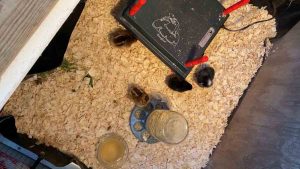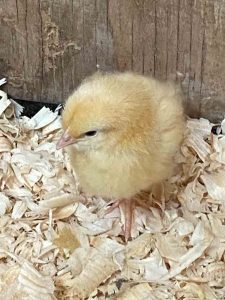Raising Baby Chicks
Raising Baby Chicks
Raising Baby Chicks (How we did it)
Even though having chickens isn’t that difficult, preparing for and then raising baby chicks does take some extra thinking. It was tempting to put this blog post in with the building of the coop, but there really was so much to say about the initial experience of raising baby chicks for the first time before they go into the coop.
There are a few things to think about especially if you are the momma of these chicks versus having a hen hatch and take care of her own chicks. In our case, we special ordered the chicks and picked them up at a reputable feed supply store. Links will be on the bottom of this blog for my choices.
Preparing the Brooder
Picking up the baby chicks can be stressful for the chicks and a little for us. The journey for them in the box is hard on them. Important to have on hand for the ride home was water and making sure the chicks are warm. In our case, we had to drive almost 3 hours to pick them up. Before we left the house, we purposed to have the space ready for the chicks when they arrived home. This meant turning on the heating plate (warmer) and having the box lined with pine shavings, water and food.
The babies need electrolytes for their first 24 hours. We made sure to have the chick’s water in the car waiting for them. Nipple feeders are definitely the best waterer for us when we brought our chicks home! With a few taps, the chicks understood right away where to drink.
Electrolytes – the first day
Our brooder was approximately 2 feet by 4 feet, for 7 baby chicks. Anyone creating a brooder for their babies, must make sure the brooder area has plenty of ventilation. Our brooder was made out of wood and the walls are framed pieces of hardware cloth.
As soon as we arrived home, we put the chicks in the brooder with the heating plate. This heating plate is great because it is adjustable and is the perfect temperature. It isn’t dangerous to leave on like some heat lamps. Pine shavings cover the floor of the brooder area (about an inch deep to start).

Daily Tasks for Raising Baby Chicks
Everyday, we would refresh their water, add to their food and apply a few more shavings to make sure it doesn’t smell. They poop a lot! It is ideal to have a feeder with holes, as the babies want to stand it in and eat… which means poop in their food. The holes help cover the food a little. You’ll want to make sure to feed the chicks according to their age (1-7 weeks, 7-18 weeks, or adult feed) with the proper amount of grit. Babies need more protein and the grit size is proportional to their size. The grit helps their food to digest.
Experimenting with textures help the chicks since they were not able to be outside for the first few days. We brought them dandelions with dirt and roots attached, or microgreens in a pot of dirt. Chicks love to scratch and explore. They also loved romaine lettuce and a crumbled egg (with the shell) for their first week! After that first week, all kinds of lettuce and swiss chard are good choices.
How Long to Keep the Chicks Inside or in Brooder
The chicks stayed in their brooder in our house, for about 3 weeks until the temperature out in the coop was warm enough for them to be in the coop all night. The warming plate went into the coop with them. Occasionally during the 3 week period, I did bring them outside on the grass confining them to a bottomless cardboard box with their water. They loved the introduction to the outside world so I highly recommend doing that if you can!
These are some resources that we are using:
Where to keep the chicks when you first get them!
Shopping List for ingredients (substitutes):
Cashton Farm Supply for feed and more
Country Life Natural Foods is a great sources for raw nuts and seeds
We are looking at a couple of different options for feed.. so stay tuned for updates
Optional add-in ingredients/resources:
Grow from seed any plants to feed the chickens!
Recommended Equipment:
A great resource for leaning about chickens and all other aspects of homestead living!
Heated water bucket for norther winters!
Some links are affiliate links, which means I make a small commission at no extra cost to you. See more info here.
There are a few things to think about especially if you are the momma of these chicks versus having a hen hatch and take care of her own chicks.


